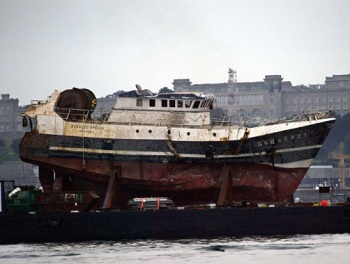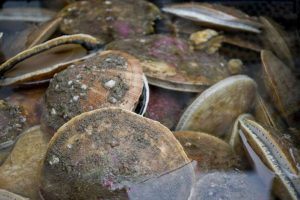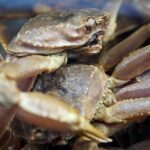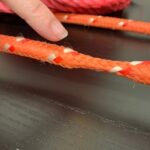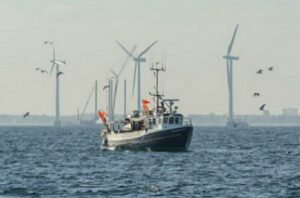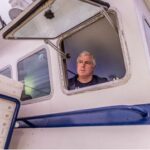Daily Archives: October 6, 2021
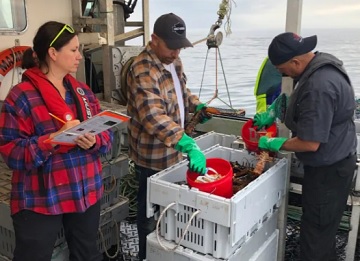
Sipekne’katik First Nation’s lobster study to assess impact of summer and fall fishing
The boat, Mamma Ain’t Happy, is owned by Sipekne’katik First Nation and is fishing under food, social, and ceremonial (FSC) tags. The tags are the licence under which the lobster can legally be fished and allow the band to harvest it for those purposes but not to sell it. After each trip, the catch is brought back to the community for lobster giveaways that feed most of the families in the second-largest Mi’kmaw band in Nova Scotia. But this boat doesn’t just fish for people’s supper. It’s also a data collection site for a study on lobster conservation. >click to read< 13:48
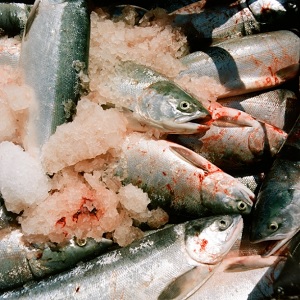
One Alaska Bay Is Booming With Salmon, For Now
Bristol Bay’s sockeye harvest has long made up about half of the global catch of this species, in a seasonal blitz as short as it is enormous: The fishery lasts a mere six weeks. Each summer, 15,000 seafood processors, boat-based fishermen, and setnetters, including families such as the Bandles, gather here to support an industry worth more than $2 billion in 2019. Some fishermen will net enough cash to live on until the fish come back the next year. And this year, Bristol Bay outdid itself,,, But such riches are localized. Outside of Bristol Bay, salmon fisheries are failing, including those on British Columbia’s famed Fraser River, on Alaska’s Chignik and Copper Rivers, and in Cook Inlet. Five hundred miles north of Bristol Bay, Yukon River salmon runs have totally collapsed. >click to read< 12:35 ADFG: Bristol Bay sockeye runs set all-time record – It’s official: Bristol Bay’s 2021 commercial salmon season was the largest on record. >click to read<
Athearn Marine Agency Boat of the Week: 72′ Steel Offshore Lobster Boat, 460HP Cat, John Deere 40 Auxiliary
 To review specifications, information, and 56, yes, 56 photo’s! >click here< , To see all the boats in this series >click here< 10:40
To review specifications, information, and 56, yes, 56 photo’s! >click here< , To see all the boats in this series >click here< 10:40
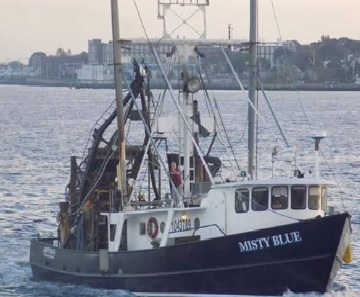
National Transportation Safety Board Report on U.S. Fishing Vessel Accidents
For the eighth year, the National Transportation Safety Board (NTSB) has released its “Safer Seas Digest 2020,”,,, While the report examines all maritime accidents, from inland towing to cargo ships, this article will focus on five notable fishing vessel incidents that occurred in 2019. A significant contributing causal factor to the fishing vessel accidents is crew fatigue. The NTSB noted in the digest that an effective way to prevent fatigue among crewmembers is for owners/operators to have measures in place to ensure that crewmembers receive enough rest to adequately perform navigational and lookout duties. >click to read< 08:52
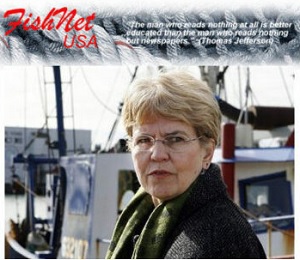
Has the Precautionary Principle been blown away by wind power?
Clog our near shore and offshore waters with hulking (approaching 1,000 feet tall today, who knows what’s in store for tomorrow?) structures supporting huge rotors with tips moving through the air at velocities approaching 200 miles per hour? So what? Festoon our seabeds with electrical cables carrying huge amounts of electricity, the passage of which will generate electro-magnetic fields that will almost certainly have some effect on some of the species of critters that will be influenced at some level by those fields daily, monthly or annually? Who cares? Influence wave/current/tidal scouring and associated turbidity in undetermined-and very likely undeterminable-ways on the fish, marine mammals, birds, phyto- and zooplankton, and other sea life? What’s the difference? >click to read< By Nils Stolpe-FishnetUSA, more from Nils, >click here< 08:05






